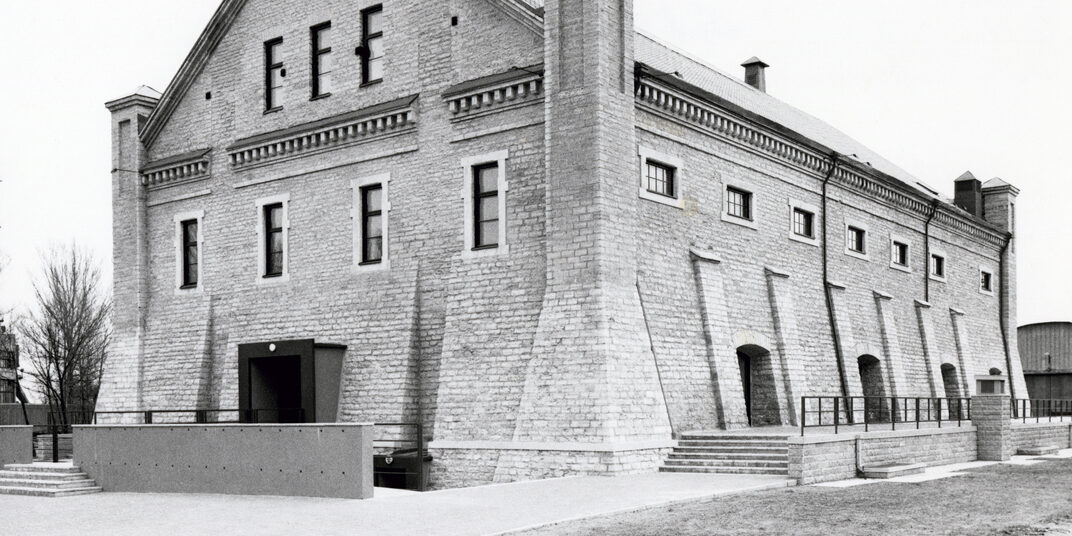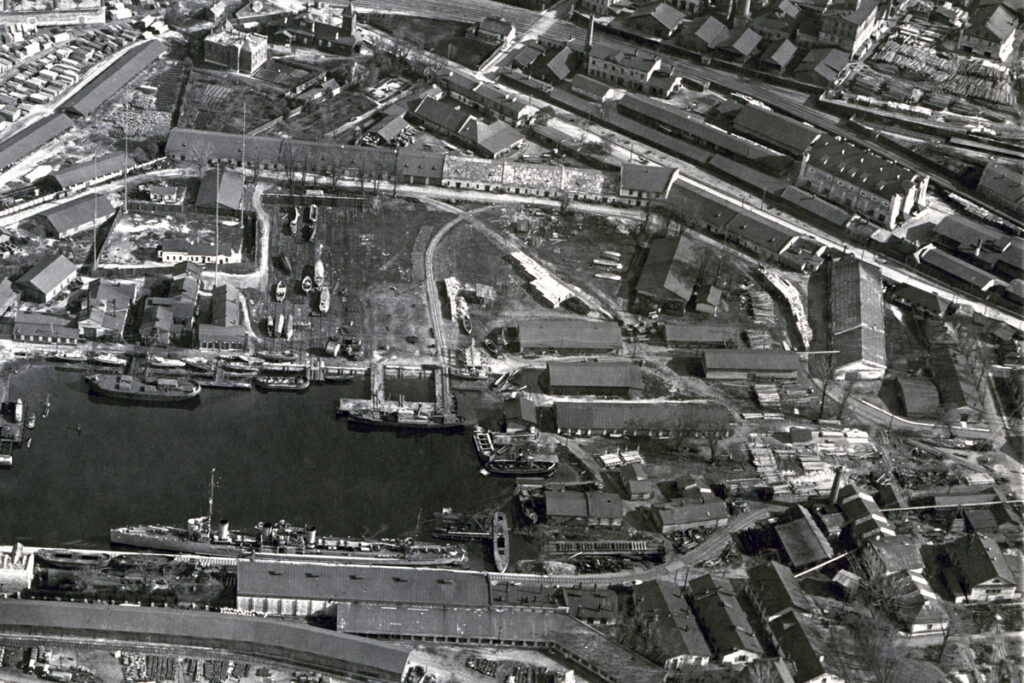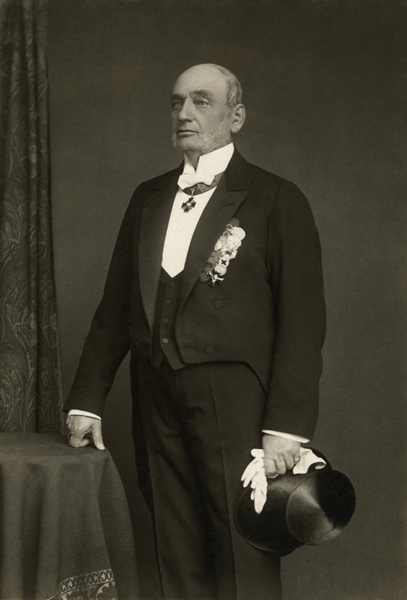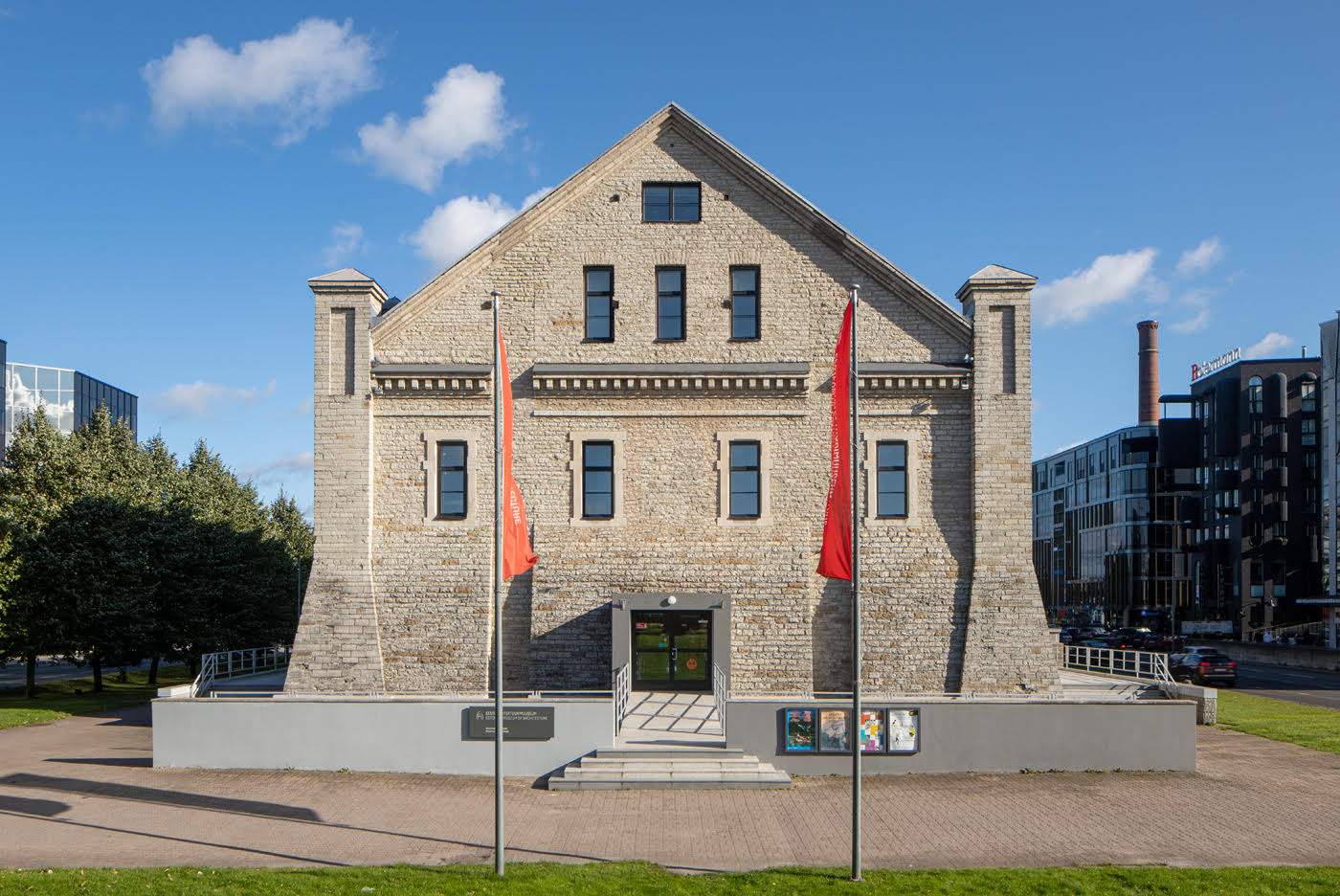
The Rotermann mill and Rosen distillery were the first industrial enterprises established between Mere Boulevard and Jaama (now called Hobujaama) Street. An esplanade devoid of buildings, the proximity of the port and good railway connections contributed to the area becoming a whole industrial quarter.
The story of the historical part of the quarter – the Salt Storage building – is closely connected with three men from the Rotermann family.
Rotermann Quarter
Christian Abraham Rotermann (1801–1870) went into business in 1829 on Mere Boulevard with a depot under the business name Chr. Rotermann, which manufactured and sold sawn timber.
In 1849, Christian A. Rotermann built a department store along Viru Square. Over time, a diverse complex of factories arose behind and adjacent to the store, including a sawmill, alcohol rectification plant and starch factories, flour mill, bread factory and refrigeration facility.
In 1865, his son Christian Barthold Johann Rotermann, also referred to as Rotermann Junior (1840–1912), took over, and expanded the operation’s foodstuffs and timber divisions.
In 1870, a clutch of mills, storehouses and warehouses were built along what is now Hobujaama Street, and it became more densely built up.
In 1887, a macaroni production plant was founded.
In 1888, a representative department store and Tallinn’s biggest grain mill were built on Mere Boulevard. The grain from the flour was mainly sourced from the Volga River and western Siberia.
The Rotermann factory complex was the location of the first private telephone wires strung in Tallinn in 1880. The telephone line ran between the complex and the port.
The flour mill built in 1890 was largest of its kind in Tallinn.
In 1891, a new board factory building was built, and in 1896, a wool factory building and a next-door mill machinery production facility.
In 1900, a stone elevator building was built next to the existing low timbered buildings on Hobujaama Street.
A 50-metre-high boiler smokestack – still a landmark today – was built in 1902.
Ten years later, Rotermann Junior expanded the department store and built a new bread factory and office building.
During the Republic of Estonia (1918–1940) structural changes took place in the foodstuff industry, but the Chr. Rotermann company successfully continued operations in food and timber processing. The factories employed more than 200 people during this period.
Chr. Rotermann Co. was reorganized in 1921 into the joint stock company Rotermanni Tehased. The company was dissolved in the twilight of the first era of independence and the bread factory and flour mill were nationalized by the Soviets, with the former renamed after Viktor Kingissepp, Estonian communist politician, and later became the production conglomerate Leibur. During the Nazi occupation (1941–1944), the plant reverted for a time to the Rotermann bread factory name.
In the post-Soviet transition era, industrial production ceased in the historical Rotermann buildings. Buildings were privatized. The barley groat facility was last to shut down, as the most valuable buildings were hit by a fire (2000), which unleashed looting of many of the buildings.
In the 2000s, the area was revitalized – one after another, many historical buildings were restored and new ones were constructed. Rotermann Quarter is today an urban environment known for its high architectural quality.
History of the Salt Storage building
The Rotermann Salt Storage – cut off from the rest of the Rotermann Quarter by a new branch of Ahtri Street – is one of the most imposing limestone structures in the area. The building, which was built in 1908 based on a design by Baltic German engineer Ernst Boustedt, was home to a salt warehouse for processing, storing and packaging imported salt.
The facility was renovated in 1995–1996 under a project by architect Ülo Peil and interior architect Taso Mähar. Originally a single-storey structure, it was divided among different levels by an interior ceiling and galleries, creating a variety of exhibition spaces all with their own character.
The Rotermanns
The Rotermann family’s history extends back to the central Estonian city of Paide, where Christian Rotermann was a goldsmith. Christian Abraham Rotermann was the first in the family to go into business, serving as Tallinn alderman from 1859 until his death in 1870. He is known for building the first steam-powered mill in the Maarjamäe part of Tallinn, part of his starch factory and distillery complex there. The plant was destroyed in a 1869 fire, upon which Rotermann had a new one built on Hobujaama Street in the centre.
Christian Barthold Johann Rotermann continuedin his father’s footsteps, also expanding the iron and timber industry. During his time, the Rotermanns’ business was widely known in Russia and Western Europe. He also served as city official in Tallinn and honorary consul for Belgium. Chr. B. J. Rotermann is also remembered as one of the first in Tallinn to buy an automobile.
In 1910–1911, he built a modern three-storey brick home/office at one end of Mere Boulevard, in a style close to Finnish National Romanticism. The project bears the signature of Ernst Boustedt, but according to some information, the building may have actually been designed by the well-known Finnish architect Eliel Saarinen.
Christian Ernst August Rotermann (1869–1950) continued expanding the family business, adding a car dealership. His own car was the first American-made automobile in Tallinn. In 1921, the year in which the Chr. Rotermann Co. was reorganized into the joint stock company, he became chairman of the board. AS Rotermanni Tehased was dissolved on 1 September 1939. Chr. E. A. Rotermann died in Lidingö, Sweden.










